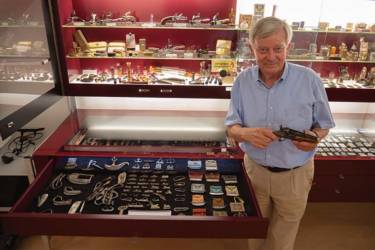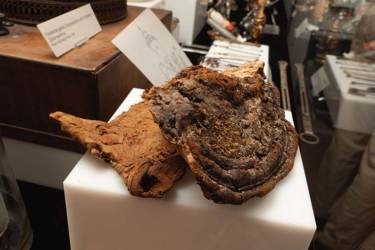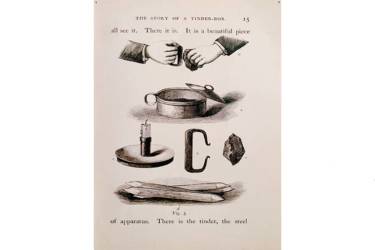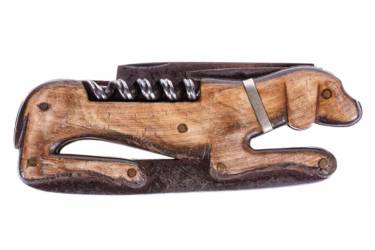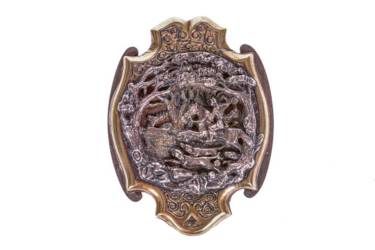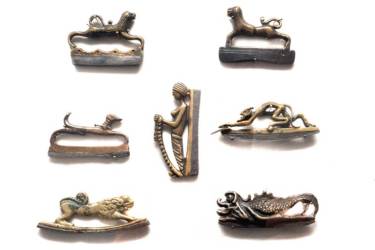Fire is fascinating. The ever-changing shape of the flames of a camp fire or fire in a fireplace captivates the viewer, enticing them to allow their mind to wander. This moment of contemplation seems to be deeply rooted within humanity. And for good reason, as fire has had a vital impact on our cultural-historical development. What started off as a happy coincidence later became a skill of our ancestors that helped provide humanity with fire. The lighter gave people the ability to create fire. That alone makes it an incredibly important tool. When combined with increasingly exquisite artistry and new techniques, astounding pieces have been created over the centuries. Across the world, there are just under 40 collectors like Volker Putz, who, thanks to their passion for collecting, have collated snippets of cultural history.
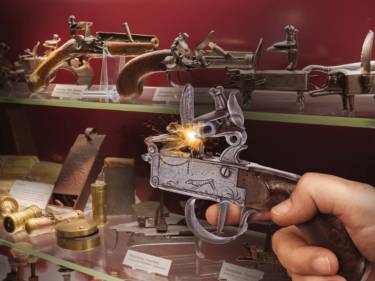
Fire and flame
How does one become the owner of what is probably one of the world’s most extensive collections of lighters?
I have always been a passionate collector, but I found my first two lighters from the 1920s by accident. I came across them more than 25 years ago at Portobello Market in London. The artistry and the technical finesse impressed me straight away. Since then, I search flea and antiques markets around the world for these useful helpers. Back in the day, I even had a fax service that would inform me whenever a lighter was about to go up for auction.
Your collection now spans a period of more than 2000 years of fire lighting.
That is the result of the cultural-historical importance of fire lighting, almost by default. Once humans had the ability to make fire on their own, food could be better prepared, and they had protection against wild animals and the cold.
Can the importance of lighting fires for the development of humanity be compared to hunting, then?
Absolutely. Even though I’m not a hunter, it does seem plausible to me that without hunting, humanity’s development would have taken a different course. Hunting also plays a role in the design of the lighters. Lone wild animals can be found here, as can entire hunting scenes. The development of the lighter is also associated with weapons technology. In the 16th and 17th centuries, for example, wheel-lock and flintlock lighters were invented in parallel with the firearm.
What makes the development of wheel-lock and flintlock lighters so special?
This was the first time that the process of lighting a fire was mechanised. Instead of striking steel on a flint by hand, the wheel-lock lighter unlocks a lock. This motion causes a chain attached to the lock to drive a wheel, which grinds over a piece of pyrite to create sparks. These sparks fall to the tinder underneath, which creates fire. Today there are only a few fully preserved wheel-lock lighters still in existence.
You have amassed a collection of several thousand lighters from all over the world. With each piece, do you still remember how and where you acquired it?
On the whole, yes. But it goes without saying that many pieces have a very special story. For example, I got chatting to my taxi driver when I was in the UK. When I told him I had come for a lighter, he told me he still had an old thing like that in a drawer at home. When he then described it to me, I immediately asked him to drive me to his house first. Today that lighter is part of my collection. I had to wait a bit longer for another one of my chance discoveries. After seeing a special piece by chance at an antiques dealer in Bangkok, the employee initially didn’t want to sell it to me: it had apparently always sat in her boss’ drawer, and he had recently died. I left empty-handed. A few days later, just before my return flight, I decided to visit the shop again. And I was in luck. In the meantime, the employee had come to the decision that her boss probably would have approved of her passing the lighter on to someone else.
Have you set yourself an end goal for when your collection will be complete?
No. Of course, finding new – and above all still unknown – pieces is not getting any easier. But I still find lighters so fascinating as an object. Which is why I’m currently in the process of putting my collection online at www.volker-putz-lighter-collection.de. And there are already ideas for the next exhibition…


